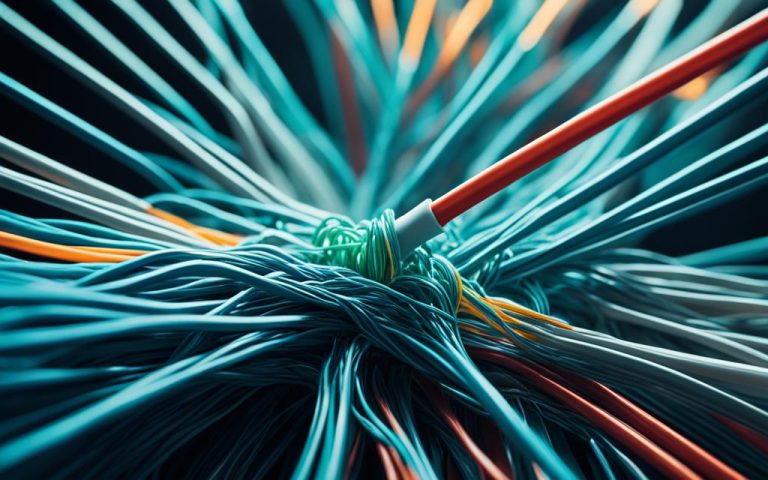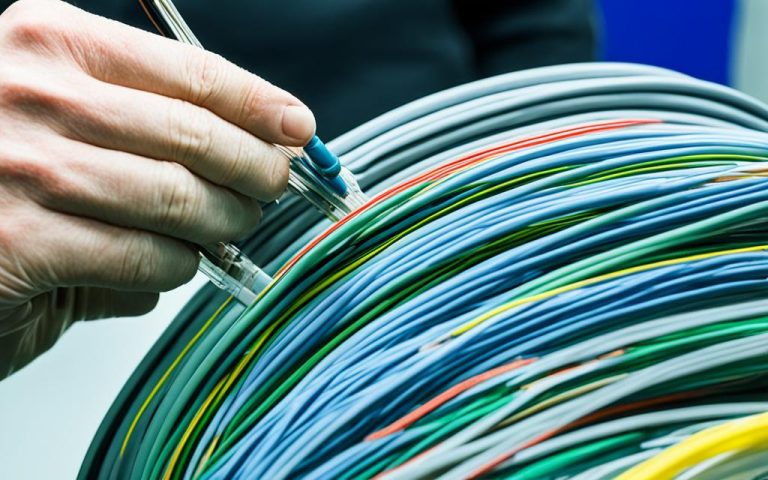Fiber optic networks have experienced rapid growth in recent years, driven by the need for fast and reliable data. In the United States, fiber-to-the-home (FTTH) deployments reached a record high in 2023, with nine million homes connected to fiber. It is predicted that 12 million homes will be deployed with fiber in 2024. Across the globe, governments are investing in critical fiber infrastructure projects, with fixed broadband penetration projected to accelerate. The growth of fiber networks is also driven by expansion into new markets, upgrades to outdated networks, and the opportunity to win federal grants. With the support of government programs and increasing broadband demand, the future of fiber looks promising worldwide.
In this article, we will explore the phenomenal growth of fiber networks in the United States, the fiber expansion across Asia-Pacific & India, the fiber investment driving broadband network growth in Europe, the role of fiber expansion through U.S. government programs, and the conclusion highlighting the future of fiber and technology advancements. Join us as we dive deeper into the world of fiber optic networks and examine their impact on the future of communication infrastructure.
Phenomenal Growth of Fiber Networks in the United States
The United States witnessed remarkable growth in fiber-to-the-home (FTTH) deployments in 2023, with nine million homes now connected to fiber. This surge surpassed the previous year’s record and brings the total number of homes with access to fiber to nearly 77.9 million, representing over 50% of residences in the country.
The expansion of fiber networks can be attributed to the efforts of new players, including rural electric cooperatives, who are investing in consumer and business fiber networks. This increased competition is driving telecom and major network providers to expand into new markets and upgrade outdated networks to keep pace with the evolving demands of customers.
The Fiber Broadband Association (FBA) predicts that this rapid growth will continue, with an estimated 12 million homes to be deployed with fiber in 2024. This projection highlights the sustained momentum and importance of fiber networks in the United States.
“The expansion of fiber networks in the United States demonstrates the growing demand for reliable and high-speed internet connectivity. With fiber-to-the-home deployments increasing year after year, we are witnessing a significant transformation in the way people access and utilize digital services.”
As the digital landscape continues to evolve, fiber networks play a crucial role in enabling faster and more reliable internet connections. The United States is embracing this technology shift, ensuring that more households have access to fiber optic networks.
Fiber Expansion Across Asia-Pacific & India
Governments in the Asia-Pacific region, including India, are heavily investing in critical fiber infrastructure projects to support digital growth and connectivity. A report by GlobalData projects accelerated fixed broadband penetration in the region, driven by extensive network expansion and increased service adoption.
Several countries in the region, such as Indonesia, the Philippines, Thailand, and India, are expected to witness significant fiber network growth. The Indian government has launched the National Broadband Mission, a multi-billion dollar initiative aimed at developing a robust optical fiber grid across the country.
The recognition of the importance of fiber networks in supporting digital transformation and addressing connectivity challenges has prompted governments to prioritize fiber expansion efforts across the Asia-Pacific region, particularly in India.
Key Facts:
- The Asia-Pacific region, including India, is making substantial investments in critical fiber infrastructure projects.
- Fixed broadband penetration is projected to accelerate, fueled by extensive network expansion and increased service adoption.
- Countries like Indonesia, the Philippines, Thailand, and India are expected to experience significant growth in fiber networks.
- The Indian government has launched the National Broadband Mission with a multi-billion dollar investment.
These efforts highlight the growing understanding of the pivotal role played by fiber networks in advancing digital initiatives, enhancing connectivity, and driving economic growth throughout the region.
Fiber Investment Driving Broadband Network Growth in Europe
Fiber investment is playing a crucial role in driving the growth of broadband networks across Europe. Several countries in the region, including Portugal, Romania, and Lithuania, have emerged as leaders in fiber connectivity, with around 90% of households already connected to fiber by the end of 2022.
However, there are still significant investment gaps in other European countries, such as Belgium, Germany, and Greece. In 2022, less than 30% of homes in these countries were connected to fiber, indicating the need for further investment to bridge the connectivity divide.
In response to this need, Germany has set ambitious plans to connect nearly half of all homes with fiber by the end of 2024. This commitment highlights the country’s dedication to expanding its broadband infrastructure and providing high-speed internet access to its citizens.
In the United Kingdom, the government has pledged substantial funding to boost broadband coverage in hard-to-reach areas and enhance gigabit-capable broadband services across the country. Broadband suppliers in the UK are working towards achieving nationwide coverage by 2030, aiming to ensure that all residents have access to reliable and fast internet connections.
| Country | Homes Connected to Fiber (2022) |
|---|---|
| Portugal | 90% |
| Romania | 90% |
| Lithuania | 90% |
| Germany | <30% |
| Greece | <30% |
| Belgium | <30% |
The table above showcases the varying levels of fiber connectivity across select European countries.
As Europe continues its fiber investment efforts, increased broadband network growth will contribute to improved internet access, enhanced connectivity, and more opportunities for economic growth and digital innovation.

The Role of Fiber Expansion through U.S. Government Programs
Fiber networks in the U.S. have experienced significant growth in recent years, and this expansion has been partially driven by the impact of the $1.2 trillion federal Infrastructure Investment and Jobs Act. This comprehensive legislation provides funding for projects in underserved areas, aiming to bridge the digital divide and improve broadband connectivity across the country. A major focus of the act is on fiber optic deployments, recognizing fiber as a crucial infrastructure for high-speed internet access.
Under the Infrastructure Investment and Jobs Act, the U.S. government is expected to allocate a substantial portion of the funds to support fiber expansion. This investment will help bring fiber optic networks to areas that have been historically underserved in terms of connectivity. By extending the reach of fiber infrastructure, the government aims to enhance broadband access and create opportunities for economic growth, education, telehealth, and other essential services.
In addition to the Infrastructure Investment and Jobs Act, there are other government programs that are supporting fiber expansion and driving increased broadband connectivity. The Broadband, Access, and Deployment (BEAD) program, for example, provides grants to states and local communities to fund broadband infrastructure projects. The Rural Digital Opportunity Fund (RDOF) is another initiative that aims to bring broadband connectivity to rural and underserved areas, encouraging fiber deployments in these regions.
Benefits of Fiber Expansion
- Improved Broadband Accessibility: Fiber expansion through government programs helps provide faster and more reliable internet access to communities, enabling them to participate in the digital economy and access online resources.
- Economic Growth: With increased broadband connectivity, businesses in underserved areas can thrive, attracting investments and creating new job opportunities.
- Enhanced Education: Fiber-enabled internet connections facilitate quality online learning, narrowing the educational gap and ensuring students have the resources they need for academic success.
- Telehealth Advancements: Robust broadband infrastructure supports telehealth services, allowing patients in remote areas to access medical consultations, diagnoses, and treatments remotely.
The demand for fast internet connection continues to rise, fueled by bandwidth-intensive applications and network-intensive leisure activities. Big players in cloud computing also rely on considerable bandwidth, further driving the need for fiber optic networks. The government’s commitment to supporting fiber expansion through various programs reinforces the importance of broadband connectivity in today’s interconnected world.

Quoting Expert Opinion
“The government’s investment in fiber expansion is a step in the right direction to bridge the digital divide and prepare the country for a future that heavily relies on high-speed internet connectivity. By prioritizing fiber infrastructure, the U.S. government is ensuring that both urban and rural areas have equal opportunities to access and benefit from the digital economy.” – Sarah Thompson, Senior Analyst at Broadband Research Institute
Conclusion
The future of fiber communications infrastructure is on an upward trajectory, fueled by projected growth, continuous technology advancements, and substantial investments from governments and service providers. Fiber optic technology has proven to be a game-changer, offering faster speeds, lower latencies, enhanced resiliency, heightened security, and versatile applications. Recent innovations, such as 10 Gigabit Passive Optical Network (XGS-PON) technology and the development of quantum networking, are paving the way for even more incredible breakthroughs in the field.
The demand for fiber optics is set to soar in the coming years, thanks to its integral role in vital domains like cloud computing, 5G networks, Internet of Things (IoT), artificial intelligence, and smart cities. These applications rely heavily on the efficiency and reliability of fiber communications infrastructure. Despite challenges related to installation and cost, the benefits of embracing fiber to the building (FTTB) remain undeniable, especially as it positively impacts real estate value and overall connectivity.
As fiber networks become increasingly pervasive, industry professionals acknowledge the need to stay at the forefront of technology advancements. Continued research and development, coupled with collaborations between academia, government bodies, and private organizations, will foster the growth and evolution of fiber communications infrastructure. With its unrivaled capacity to support data-intensive activities and address the demands of tomorrow’s digital landscape, fiber will remain a crucial component of the future of communication infrastructure.
FAQ
What is fiber communications infrastructure?
Fiber communications infrastructure refers to the network of fiber optic cables and equipment that enables the transmission of data, voice, and video at high speeds and over long distances. It forms the backbone of modern communication systems, providing fast and reliable connectivity across various industries and sectors.
What are fiber optic networks?
Fiber optic networks are telecommunications networks that use thin strands of glass or plastic fibers to transmit data signals using light waves. These networks offer significant advantages over traditional copper-based networks, such as higher data transmission speeds, greater bandwidth capacity, and improved reliability.
What is the future of fiber communications infrastructure?
The future of fiber communications infrastructure is bright. With advancements in technology, increasing government investments, and growing demand for high-speed internet connectivity, fiber networks are set to play a crucial role in supporting the digital transformation of various industries, including cloud computing, 5G, IoT, artificial intelligence, and smart cities.
What is the phenomenal growth of fiber networks in the United States?
In the United States, fiber networks have experienced rapid growth, with an increasing number of homes being connected to fiber-to-the-home (FTTH) deployments. This growth is driven by new players entering the market, expansion into new markets, upgrades to outdated networks, and government initiatives supporting fiber expansion. The Fiber Broadband Association predicts further growth, with millions of homes expected to be deployed with fiber in the coming years.
How is fiber expansion progressing in the Asia-Pacific region and India?
Fiber expansion in the Asia-Pacific region, including countries like India, is progressing rapidly. Governments are making significant investments in critical fiber infrastructure projects, aiming to enhance broadband network expansion and service adoption. Countries like Indonesia, the Philippines, Thailand, and India are expected to experience substantial growth in fiber networks, recognizing their importance in supporting digital growth and connectivity.
How is fiber investment driving broadband network growth in Europe?
Fiber investment is driving broadband network growth in Europe, with countries like Portugal, Romania, and Lithuania leading the way. These countries have achieved high household connectivity rates to fiber networks. However, other countries like Belgium, Germany, and Greece still require significant investment to catch up. The UK government has also pledged funding to improve broadband coverage in hard-to-reach areas and increase gigabit-capable broadband across the country.
What is the role of fiber expansion through U.S. government programs?
Fiber expansion in the United States is facilitated by various government programs, such as the Infrastructure Investment and Jobs Act, Broadband, Access, and Deployment (BEAD) program, and the Rural Digital Opportunity Fund (RDOF). These programs provide funding and support for fiber optic deployments, particularly in underserved areas. The increasing demand for fast internet connection and the reliance on bandwidth-intensive applications further drive the need for fiber optic networks.
What are the benefits of fiber communications infrastructure?
Fiber communications infrastructure offers numerous benefits, including faster speeds, lower latencies, improved resiliency, greater security, and more flexible applications. It enables the seamless transmission of large amounts of data, supports advanced technologies like cloud computing and 5G, and enhances the overall connectivity and productivity of individuals, businesses, and communities.



















